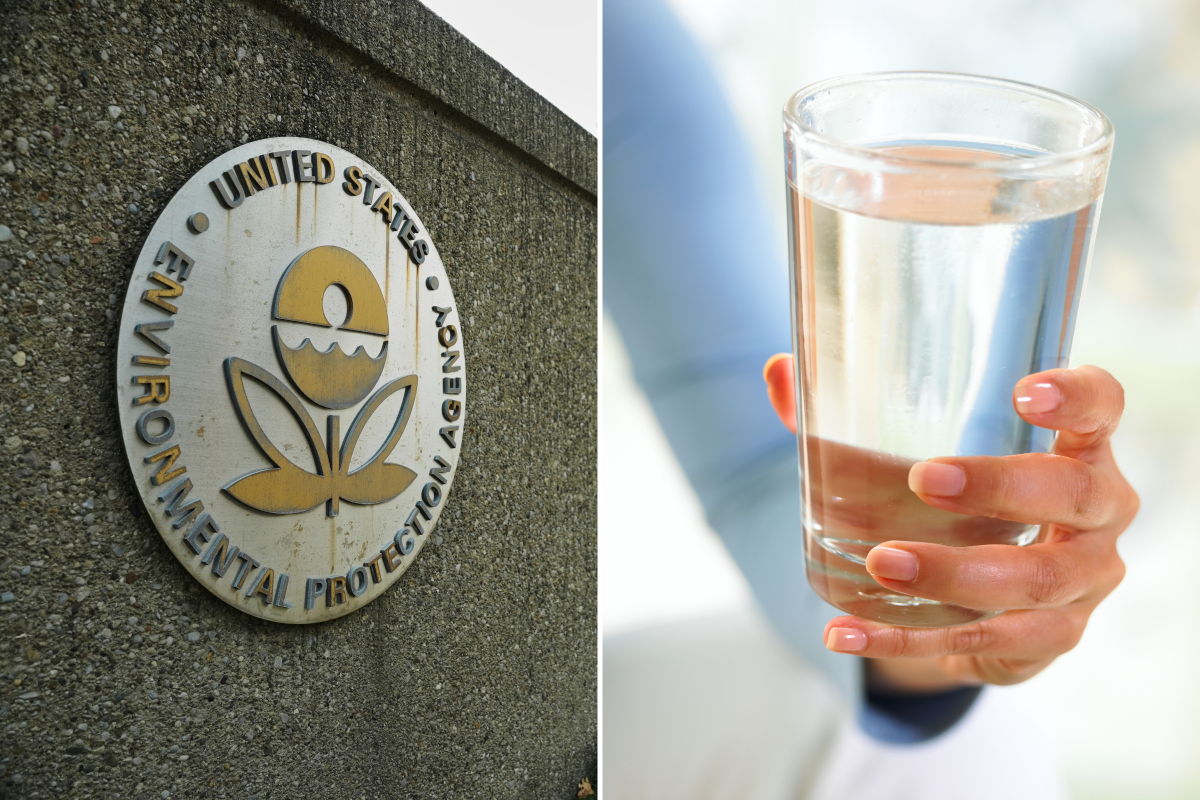
The Environmental Protection Agency (EPA) is looking to roll back regulatory standards for three types of per- and polyfluoroalkyl substances, also known as PFAS chemicals, in drinking water systems.
This comes despite a series of releases of EPA data revealing that millions of Americans are currently drinking water contaminated with the chemicals.
“I am very concerned, as are all the scientists and affected residents whom my colleagues and I speak with all the time,” Phil Brown, the director of the Social Science Environmental Health Research Institute at Northeastern University, told Newsweek.
He added that the regulations for these PFAS chemicals were “years in the making, and took much effort from people across the many involved communities.”
Newsweek has contacted the EPA via email for comment.
Why It Matters
PFAS chemicals, a group of thousands of different substances, are classified as a Group 1 carcinogen by the International Agency for Research on Cancer, and have been widely found in U.S. drinking water systems.
These chemicals, also known as “forever chemicals,” are used across various industries, featuring in consumer products and even smartwatch wristbands, as they are favored for their long-lasting nature.
However, significant amounts of research has unveiled the potential health risks associated with these chemicals, such as increased risk of various cancers alongside hormonal and reproductive issues.
As a result, there have been calls from experts and environmental groups to ensure these chemicals are reduced and regulated in America’s drinking water.
What To Know
The PFAS National Primary Drinking Water Regulation determined that all water utilities had to ensure that levels of six PFAS chemicals were below new Maximum Contaminant Levels (MCLs) by 2029, although that deadline was pushed back in May to give utilities more time to comply.
For PFOA and PFOS, the MCL was 4.0 parts per trillion, and for PFHxS, PFNA, and HFPO-DA, the MCL was 10 ppt.
According to the reversal request, raised in the U.S. Court of Appeals on September 11, the EPA said “parts of the rulemaking process were unlawful” in regard to this rule within the Safe Drinking Water Act.
In its request, the EPA said that the rules regarding PFHxS, PFNA, and HFPO-DA were made without providing the public “the opportunity to adequately comment on and participate in the rulemaking process,” which the agency said was required under the Safe Drinking Water Act meaning the rules were established “in error.”
Because of that, the EPA asked the court to roll back the regulatory standards currently in place for PFHxS, PFNA, and HFPO-DA, meaning water utilities would no longer have to ensure levels of these chemicals are under 10 ppt in drinking water supply.
Instead, the EPA asked if these chemicals, along with another chemical, PFBS, could be regulated through a “hazard index.” Newsweek asked the EPA via email to clarify how the “hazard index” would work in this case.
The Hazard Index, which the EPA uses in cases where water contains multiple PFAS chemicals, involves comparing the level of different PFAS measured in the water to the highest level below which there is no risk of health effects.
In a fact sheet on the Hazard Index, the EPA said that “low levels of multiple PFAS that individually would not likely result in adverse health effects may pose health concerns when combined in a mixture,” suggesting the index focuses on the collective health hazard of multiple PFAS chemicals in conjunction, rather than implementing separate MCLs.
The move has concerned both experts and environmental associations. Brown said: “These were well-intentioned regulations that stemmed from major contamination sites in their own states, as well as awareness of the pervasiveness of PFAS and a vast set of scientific studies on the many health effects.”
He added that the EPA’s own testing has provided “much of the basis for awareness of PFAS’s ubiquity.”
“EPA’s regulation under the Biden administration was a major step forward. Like many other progressive environmental policies of that administration, the current EPA is intent on near-total deregulation,” he said.
What People Are Saying
Brown told Newsweek: “In the absence of federal MCLs, I expect that PFAS in drinking water will increase. That will lead to more PFAS in wastewater and hence in biosolids resulting from wastewater treatment, much of which ends up in fertilizer and then enters our food chain. Overall, chemical manufacturers and companies that use those chemicals in their own production will have less incentive to reduce PFAS use, since they can argue that all forms of PFAS reduction are less important.”
He added: “The Trump administration EPA is completely anti-regulatory and both Trump and EPA Administrator Lee Zeldin’s statements in support of the petrochemical and coal industries shows where their main concerns are. As is clear from both their environmental and health care policies, they are prioritizing corporate profit over human health. There is also a vindictive aspect, in that the administration is attacking all advances made under the previous administration.”
Katherine O’Brien, attorney for the environmental association Earthjustice, said in September: “Administrator Zeldin promised to protect the American people from PFAS-contaminated drinking water, but he’s doing the opposite. Zeldin’s plan to delay and roll back the first national limits on these forever chemicals prioritizes chemical industry profits and utility companies’ bottom-line over the health of children and families across the country.”
What Happens Next
It is not yet clear what the outcome of the EPA’s request will be.